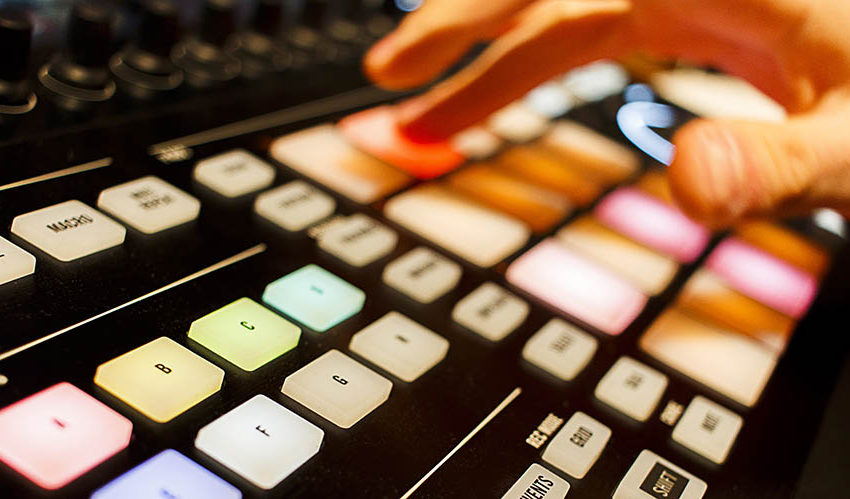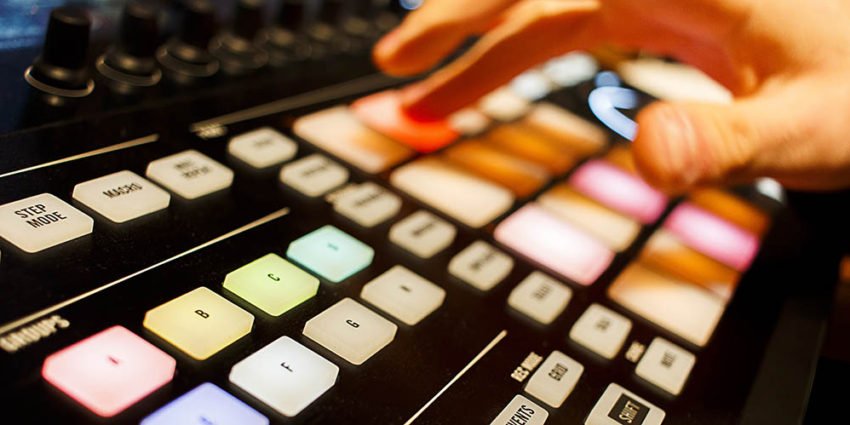How to Use a MIDI Controller
A MIDI controller can be a great tool. There are dozens of ways that you will be able to use it to make music. But when you first enter the world of MIDI controllers, it can be daunting. To help you through, here are some of the things you need to know to use a MIDI.
Choosing the Right MIDI
The first thing that you need to do is decide what type of MIDI controller you want to use. In this area, there are plenty of factors that you will need to consider. One of the most important will be how many keys you want. There are a few keyboard sizes. You can get something compact, with only 25-keys. This will be easy for you to store and transport. On the other hand, you can opt for something with 88 keys. This is akin to a full-size keyboard. This post goes into more detail about the number of keys and how you can find the right size for you.
It can also be a good idea to look at any other features that come with the MIDI controller. For example, some will feature pads or buttons. These can be used to create sound on demand. At other times, you might get one that comes with a fader. This lets you determine how loud each sound will be.
Though there are plenty of models to choose from, finding the right one for you doesn’t have to be difficult. You can use this MIDI controller list to give you more insights into what you should be looking for.
Connecting the MIDI to Your Computer
The next thing that you need to do is find a way to connect the MIDI controller to your computer. This shouldn’t be a difficult task. In most cases, the MIDI will come with a USB. All you have to do is plug this into your computer.
In other cases, though, you will need to use a MIDI cable. In this case, you will need to make sure that you are putting the cables into the right input and output. The MIDI OUT cable will need to connect with the DAW.
Pick Which Software You Want to Use
One of the most important decisions you will have to make is deciding which MIDI software you want to use. This will be called a DAW, which stands for Digital Audio Interface. This is what you will use to produce and record your music. Sometimes, your MIDI will come with this software already installed. If not, you will need to find the right software to use yourself. In some cases, this can be a difficult mission.
It’s a good idea to start with some free software. These will be great packages. Plus, they are a good way of learning more about what you are looking for when you purchase premium software. It’s also a good idea to start with something fairly basic. This is a good way of learning about how these programs work. This post goes into more detail about some of the most popular programs.
Use Your Computer Speakers
You will need to be able to hear what you are doing. The best way of doing this is by connecting the DAW output to your computer speakers. Often, this will happen automatically. If it doesn’t, you will need to change the output in settings. In most cases, you will also be able to see a visual representation of the music on your screen at the same time.
Deciding Which Sounds You Want
One of the biggest benefits of getting a MIDI controller is the musical freedom that you will be able to enjoy. When you connect it to software, you will be able to decide which sound you want to use. You’ll be able to mimic the sounds of an electric guitar. Or you might want to play the piano or a violin. This is like having an orchestra at your fingertips. All you need to do is learn how to play one instrument.
You can also use the MIDI features to help control when sounds are introduced and the type of effect they have. For example, you can use the pads to add the beats of a drum. You can control how loud or quiet each of the sounds is.
Editing With a MIDI
Once you have laid down your track, it’s time to start editing. To do this, you will need to primarily use the DAW software. However, you might be able to combine this with your MIDI. For example, you might be able to change the volume of a sound.
Adding to the MIDI
A keyboard is the best place to start when owning a MIDI. This will give you plenty of options to musical options to explore. But as your confidence grows and your music becomes more advanced, you will be able to add to your MIDI set-up. For example, you might want to add some foot pedals. These can be used in the same way you would use a piano pedal. They can also function as a stompbox like you would use when playing the electric guitar.
You might also want to add pads. These can be tapped with a drum stick and are often used to add beats to the music. Alternatively, they can function as a way of controlling the tempo that the song is played at, or adding sound effects at your cue.
Conclusion
The MIDI can be a very powerful tool, with the ability to create a huge number of sounds and replicate almost any instrument. This makes it essential for any home studio. At first, it might be tricky to know where to start with this controller. If you are a beginner, just take it slow. Experiment and play around with all the different settings. This will help you learn what your controller is capable of. Then, you’ll be able to start producing your own music.
How to Use a MIDI Controller
By thereviewsarein
A MIDI controller can be a great tool. There are dozens of ways that you will be able to use it to make music. But when you first enter the world of MIDI controllers, it can be daunting. To help you through, here are some of the things you need to know to use a MIDI.
Choosing the Right MIDI
The first thing that you need to do is decide what type of MIDI controller you want to use. In this area, there are plenty of factors that you will need to consider. One of the most important will be how many keys you want. There are a few keyboard sizes. You can get something compact, with only 25-keys. This will be easy for you to store and transport. On the other hand, you can opt for something with 88 keys. This is akin to a full-size keyboard. This post goes into more detail about the number of keys and how you can find the right size for you.
It can also be a good idea to look at any other features that come with the MIDI controller. For example, some will feature pads or buttons. These can be used to create sound on demand. At other times, you might get one that comes with a fader. This lets you determine how loud each sound will be.
Though there are plenty of models to choose from, finding the right one for you doesn’t have to be difficult. You can use this MIDI controller list to give you more insights into what you should be looking for.
Connecting the MIDI to Your Computer
The next thing that you need to do is find a way to connect the MIDI controller to your computer. This shouldn’t be a difficult task. In most cases, the MIDI will come with a USB. All you have to do is plug this into your computer.
In other cases, though, you will need to use a MIDI cable. In this case, you will need to make sure that you are putting the cables into the right input and output. The MIDI OUT cable will need to connect with the DAW.
Pick Which Software You Want to Use
One of the most important decisions you will have to make is deciding which MIDI software you want to use. This will be called a DAW, which stands for Digital Audio Interface. This is what you will use to produce and record your music. Sometimes, your MIDI will come with this software already installed. If not, you will need to find the right software to use yourself. In some cases, this can be a difficult mission.
It’s a good idea to start with some free software. These will be great packages. Plus, they are a good way of learning more about what you are looking for when you purchase premium software. It’s also a good idea to start with something fairly basic. This is a good way of learning about how these programs work. This post goes into more detail about some of the most popular programs.
Use Your Computer Speakers
You will need to be able to hear what you are doing. The best way of doing this is by connecting the DAW output to your computer speakers. Often, this will happen automatically. If it doesn’t, you will need to change the output in settings. In most cases, you will also be able to see a visual representation of the music on your screen at the same time.
Deciding Which Sounds You Want
One of the biggest benefits of getting a MIDI controller is the musical freedom that you will be able to enjoy. When you connect it to software, you will be able to decide which sound you want to use. You’ll be able to mimic the sounds of an electric guitar. Or you might want to play the piano or a violin. This is like having an orchestra at your fingertips. All you need to do is learn how to play one instrument.
You can also use the MIDI features to help control when sounds are introduced and the type of effect they have. For example, you can use the pads to add the beats of a drum. You can control how loud or quiet each of the sounds is.
Editing With a MIDI
Once you have laid down your track, it’s time to start editing. To do this, you will need to primarily use the DAW software. However, you might be able to combine this with your MIDI. For example, you might be able to change the volume of a sound.
Adding to the MIDI
A keyboard is the best place to start when owning a MIDI. This will give you plenty of options to musical options to explore. But as your confidence grows and your music becomes more advanced, you will be able to add to your MIDI set-up. For example, you might want to add some foot pedals. These can be used in the same way you would use a piano pedal. They can also function as a stompbox like you would use when playing the electric guitar.
You might also want to add pads. These can be tapped with a drum stick and are often used to add beats to the music. Alternatively, they can function as a way of controlling the tempo that the song is played at, or adding sound effects at your cue.
Conclusion
The MIDI can be a very powerful tool, with the ability to create a huge number of sounds and replicate almost any instrument. This makes it essential for any home studio. At first, it might be tricky to know where to start with this controller. If you are a beginner, just take it slow. Experiment and play around with all the different settings. This will help you learn what your controller is capable of. Then, you’ll be able to start producing your own music.

















